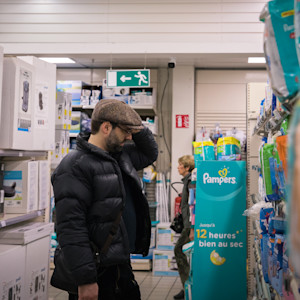Mastering website language translation for scalable growth
Your website is accessible to over 5.3 billion internet users. There’s no way around it. You lead a global business.
Even if you only serve customers on English sites, target audience members still prefer to engage in their native language. You can expand and multiply your business growth with robust, accurate translated content as you enter foreign language markets.
Companies that want to serve customers better and grow in different markets need localization. Website language translations help to bridge the language barrier gap and provide the same brand experience worldwide.
Together, we’ll dive into the state of website translation, the ingredients that make up good results, the tools that people use for their browsers, and a solution that sets your localization strategy in hyperdrive.
The reality of website translations
At a glance, it seems impossible to scale localization quickly and accurately.
There are over 7,000 languages spoken in the world today. English, Mandarin Chinese, Hindi, Spanish, and Arabic are the most common. You must translate hundreds of pages of documents and search engine meta content per language to reach users who are searching for content in other markets. That can become time-consuming and costly and makes it challenging to scale quickly.
Traditionally, brands use one of two methods: human translators or AI translation tools.
The first method can offer better quality but requires a higher budget and more time. It can be grueling to translate web pages and localize images and documents by the thousands. Your localization strategy becomes a slow and expensive process, and you won’t see benefits for a long time.
The second can sometimes miss important nuances and cultural context. Think of the time you traveled internationally with a translator app. Word-for-word translation comes across as clunky, and what you say is only a shadow of what you meant (at best).
However, there are ways to tackle website translation that combine the accuracy and quality of human translation with the speed and cost-saving benefits of automation.
Companies can use platforms like Smartling to gain accurate, localized website content with AI-powered human translation services that provide the nuance and relevance needed to connect with audiences.
AI-powered human translation leverages the best of both worlds and offers better translations for your brand.
Why masterful website translation is a must
Think of all the hard work your leadership, sales, and marketing teams put into communicating your brand and value proposition.
The tone and words you use to talk about your product matter. Great teams strategically define the brand rhetoric they want their message to convey by using specific words, emotions, and solutions.
When a browser translator or a poor solution churns out a translation, all the time and care you put into your brand goes down the drain.
In many ways, it’s like how a famous chef works hard to ensure that every detail to make her world-famous dish is perfect. But imagine if she hires someone who carelessly makes a subpar version of the meal so she can freeze and box it for supermarkets worldwide. This is an entirely different product now, and it cheapens the exclusive, high-class experience the chef had aimed for.
Literal translations may appear correct, but they fail to connect with audiences due to cultural context. Sometimes, they could even be offensive. But more importantly, word-to-word translations fail to include your brand voice and strategic messaging.
When you master your website language translations, you position your company to scale. Audiences connect with your message because it feels natural and familiar, and you win their trust. You remove language friction and create a seamless experience—just like you aim for in your brand’s native language.
You can instead focus visitors’ energy on your value proposition and offering when they experience your translated text on their desktop, iPhone, or Android device (without distractions from language barriers).
To master your translation, you need to set the stage.
Preparing your website for translation
Before hiring a professional translation service like Smartling, you must take care of a few of your website’s technical and branding elements, such as:
- Target languages: Which languages do you want to offer, and are they widely spoken in your target markets?
- Content layout: Translations can influence the existing layout on a page. Are your pages equipped to handle those changes (for example, right-to-left languages like Arabic)?
- Font size: Most languages look fine in 12pt font, but Japanese, Korean, and Chinese characters need to be a few sizes larger, which impacts your web design.
- Imagery and video: Every culture has different expectations from colors and imagery. In addition to translating words into a new language, you’ll need to figure out how to translate your brand into culturally relevant imagery, colors, and animations. (For example, while white might signify purity in the US, it can represent mourning in parts of Asia.)
- Automation and humans: If you automate the whole translation process, you risk quality control issues. However, If you use a primarily human translation method, your labor costs and time to market will be sky-high (not to mention that there is always the risk of human error). The best approach is to find a translation management platform that allows your brand to automate workflows and reach the most efficient translation mix possible (in other words, a solution that leverages AI throughout the translation process).
- Scalability: Whether it’s the time to publish, the cost to translate, or the tool and team you use, find out how to make localization a growth strategy for your brand.
Once you’ve established your plan and have the right platform or service, it’s time to evaluate your content for website translation.
How to translate your own web page
There are about 1.5 billion English speakers within the 8.1 billion world population—but only 19% of the world speaks the language.
That’s a lot of ground to cover.
To expand your reach, you’ll need to consider members of your target audience who speak different languages, such as Spanish, Portuguese, Chinese, German, or French.
While visitors could rely on web browser plugins to translate your homepage and more (as we will cover below), these don’t always offer the most accurate experience. If you’re lucky, the translations will be technically correct, but they won’t take your brand voice, style, and terminology into account.
When given a choice between similar products, 65% of the population prefers content in their native or preferred language. You can only hit that market need by translating natively and familiarly.
Here are some of the challenges Smartling can help you tackle so you can offer the best translations in your industry.
Challenge 1: Understanding cultural nuances
Different languages, cultures, and industries have different complexities. These include the difference between a British “biscuit” and an American “cookie,” a distinct way to speak to an older audience to show respect, or how some literal translations may trigger taboos.
These are all things that need to be considered if you want to connect with an audience and grow your customer base.
Nuances also permeate your industry. You will need to use specific terms and methods of communication within each market. Additionally, your brand has a unique voice and terminology that you’ll want to convey. Using a solution that can connect all these dots will help you create web pages and materials that can communicate effectively.
Challenge 2: Using the right translation technologies
You’re probably already using a suite of tools to manage your website. You’ll also need website translation software—known as a translation management system (TMS). When choosing a TMS, find one that offers communication and project management tools that minimize back-and-forth communication between project managers and translators.
Your TMS should:
- Provide brand-specific context for translators (including guidelines for brand voice, terminology management, and a glossary) within the platform
- Cut down on errors with automated quality checks
- Keep your data private & secure
- Integrate seamlessly into your existing software and tools
Implementing the proper translation software for your business can eliminate a large portion of the work of managing website translation. It also makes hiring a professional translation service or agency possible—so you can seamlessly incorporate translation languages into every site page.
Challenge 3: Leveraging the right team of translators
You can’t get just any translator. You’ll need a native translator who is well-versed in the target language and understands your business’s culture and industry.
Local talent is challenging to find, so you’ll need a way to source top experts to translate your content quickly and to scale. Smartling’s network of professional translators provides top native-speaking translators who consistently deliver high-quality translations. Smartling works with a worldwide network of translators who ensure that your translations are accurate, align with your messaging, and convey your original language’s intentions.
Popular tools for website language translation
Plugins for Google Chrome, Firefox, and Apple’s Safari, among other tools, are often the go-to translation options for curious brands that want to communicate with audiences through multilingual content.
In the past, these tools offered literal translations that came across as choppy and failed to communicate your message. But these tools are improving and growing smarter every day. Companies can combine AI technologies with human experts for the best translation.
The key to translation is leveraging cost-effective ways to scale your localization to give your audience a seamless experience. Companies can create an efficient system with a translation proxy like Smartling’s Global Delivery Network (GDN).
Learn how to use technology and humans to scale your localization with our free ebook.
A better solution for automation: The Global Delivery Network Instead of solely relying on browser-based translation tools like Google Translate or Microsoft Translator, you can adopt a platform and human service that can automate your process with AI tools.
Smartling can connect with your content management system (CMS) to create automated, high-quality page translations. You can also use translation services, such as the high-performing human translators that Smartling offers, to boost your brand’s translation efforts.








